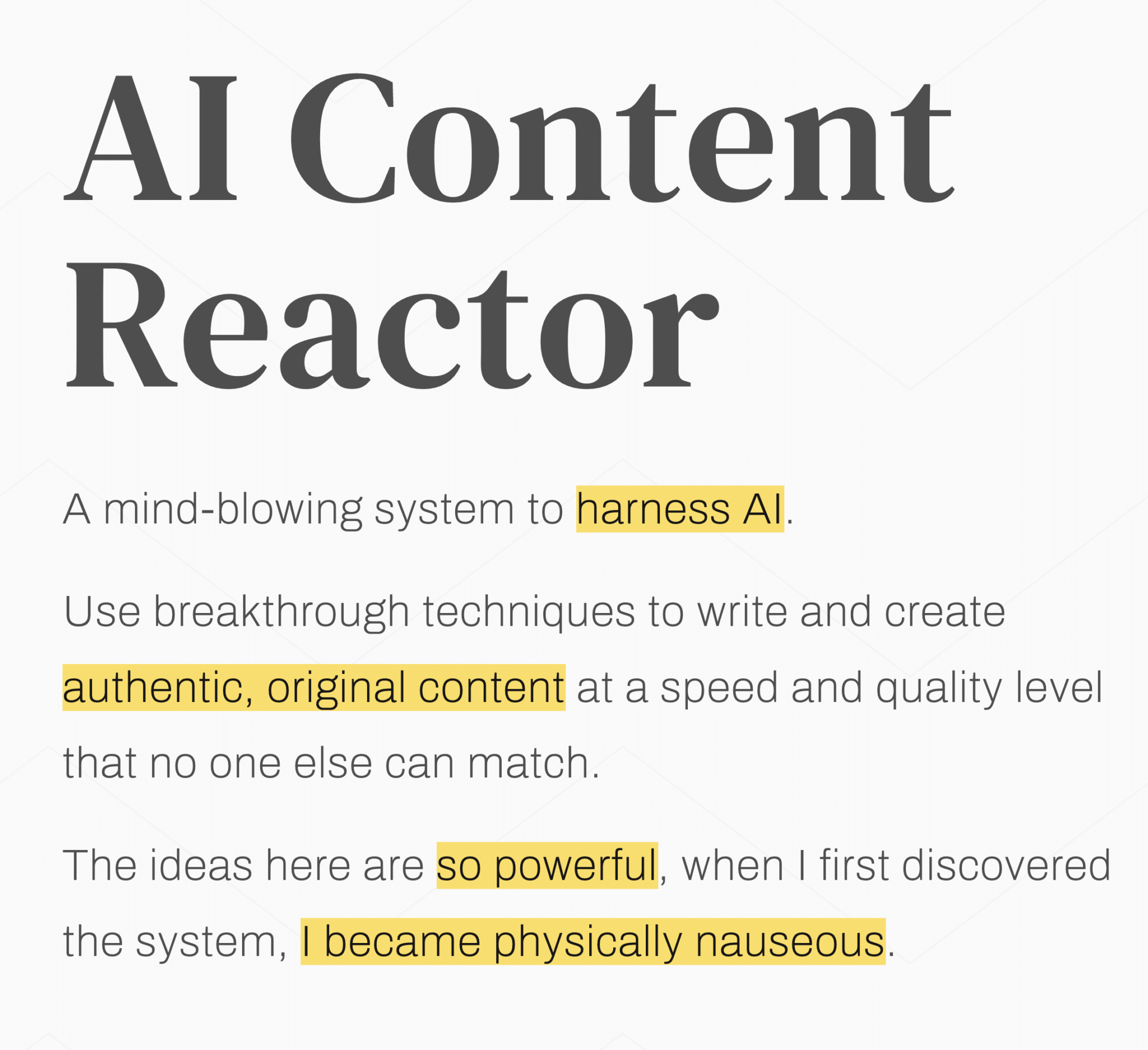You’ve spent months or even years perfecting your online marketing presence – with an amazing strategy, designing your website and putting your social media plans into action, only to find that visitors aren’t hanging around and qualified leads aren’t turning into customers.
You have so much great content, videos, eBooks – you’re doing everything according to plan. Yet, somehow, your bounce rate is high and your traffic is going down. Have you considered a content inventory? You may have oodles of great content, but it may be buried, it may have been lost or your message has changed and you just haven’t updated your message across the site. It could be a hundred and one things.
Basically, put on your thinking cap and come to terms with the fact that building a site that converts leads is not an easy thing to do. Trust me – we struggle and deal with these conversations almost every time we take on a new client.
Building a site that converts takes a lot more than great content. It takes CTAs that need to be tested and retested. You have to pay attention to the website architecture, usability, navigation path, content, how they relate to the user. I could go on and on but I digress – back to the topic at hand.
Let me be clear, not everyone needs to do a content inventory. But when you have a huge inventory of assets, especially when you’re global and have multiple sites or multiple products, then an inventory of all those assets may be a helpful approach. Take a look at what the company has published, what they are actually hosting on their server, including what they have sent out, as far as PR pieces or guest blogging. Whether it’s videos, newsletters or a full blown, scalable content marketing campaign, get ready to dive into some Excel spreadsheets and crawl files.
More often than not, a client has no clue what and how much content they actually have. Discussing “You need a content inventory” with a client will have two reactions. Either a glimmer of “Hey, you’re right, let’s do this, let me help”, or the blank stare of “What are you talking about?” Either way, it’s a necessity with large or older sites.
As far as I’m concerned, the process is one of the best ways to determine focus and implement a course-change for a failing campaign. It a sure way to determine where your site can use immediate help, especially if you have a boatload of .pdf files and downloadable content. For example, many companies allow other companies to use their catalogs as a sales tool! Boom! What a great opportunity to figure out how many of those .pdf files need to be updated, how many are being shared and most importantly, how much natural link love will that company get? Now that’s music to my ears. But, again I’m getting off-track.
What’s Involved in a Content Inventory?
A content inventory looks at each of your site’s pages individually, assessing them for the usefulness and balance of the content and will detect broken or missing pages. Your content inventory will examine specific aspects of your site’s content and design, including (but not limited to):
Completeness. Your website should be complete — anything you mention or link to should exist. 404s are simply not acceptable and correcting them will help you a great deal in linking to any orphaned pages, as well. On the Web, broken pages=broken trust.
Structure. Optimizing your site for users relies in part on the structure you’ve used to build it. Some sites are better suited to multi-access paths, but others need a more straightforward and basic hierarchy. Either way, your content inventory should ensure your structure is appropriate for both your users and the content your site hosts.
Consistency. Consistency is key to the user experience, but it’s also vital to thorough indexing by search engines. Your page structures should be consistent for users so they can understand where to find information about your product and your hierarchy should be standardized so search engines can do the same.
Pathing. Users think about content differently and need to be able to access your content in different ways. They should have plenty of paths to your content, coming both from within your site and externally. One link buried deep in your site simply isn’t enough.
Accessibility. Reaching whatever page they want through the hierarchy of your site or via search is vital to user happiness. Being accessible via search ensures that users can quickly find the information they need.
Relevance. Your audience is most likely made up of several different segments of users, each wanting to know there’s something relevant to them on your site and that they can access it easily. Grouping content by segment is another good way to simplify the search for them.
Timeliness. Although your content strategy may be built on evergreen content, nothing’s really evergreen forever. Outdated content is frustrating to users and may begin to destroy the trust you’ve built with them. Even product catalogs, user instructions and blogs should be kept as up to date as possible.
Collocation. Keyword themes can help users locate the information they’re seeking. Grouping keywords that frequently appear together and convey meaning by association is called collocation and it’s important to a well-designed content strategy.
Differentiation. You know your site needs to have unique content for search engines to smile down upon you, but you should be different from your competition, too. The content you generate should have its own voice, a style all its own. You’re not generic and neither is your company.
Armed with your completed content inventory, you can find more opportunities to improve your site’s content strategy, responsiveness and overall rankings in search. As you may or may not know, I’m a huge “use the right tool” fan, since I don’t have the time for a lot of learning curves. There are tools like Screaming Frog that make the job easier by helping analyze your site’s faults and locating errors you may miss with a manual inspection. They can also look for sections of the site that aren’t being indexed or simply aren’t ranking, slow-loading pages, duplicate pages or descriptions and lengthy page titles or descriptions. You’ll still have to look out for problems like thin, outdated or useless content, though. Sure – tools help, but you still have to delve into the content and understand the message.
Many business owners delay performing a content inventory because of the amount of work involved, but your strategy can come to a stand still and it’s not going to get better without locating the problems and correcting them. Once you’ve decided to do a thorough content inventory (or you’ve already done one) we’d love to hear from you. I’ve learned that doing a content inventory is not for the weak… it takes time, dedication and a commitment to order and sanity… or maybe I’m just a true Virgo. OCD anyone?
Are you looking for even more details? We’ve got you covered. See Content Audits: What Are They, and How Do They Help You?








































5 Responses
Glad I found you article. We have been making changes to our website. Had never heard the term “content inventory” but I like it. Also helpful was the consistency. I had never really looked at it that way before. Thanks!
Very helpful post! I follow all your posts and your blog is very useful! I will follow your advice! Thanks so much!
I can’t agree with this more. You have to do re-assessments all the time to make sure that your site is not only good in Google’s eyes, but also that of people visiting your site. Also, I like the mention of screaming frog, such a great tool to utilized.
Absolutely. We are video content creators, and always work closely with our clients to help them understand that “no content is an island,” and that all of the factors you’ve mentioned are extremely important to the success of each smaller content component. Thank you for the article.
Hey Corey, thanks for your encouraging words!